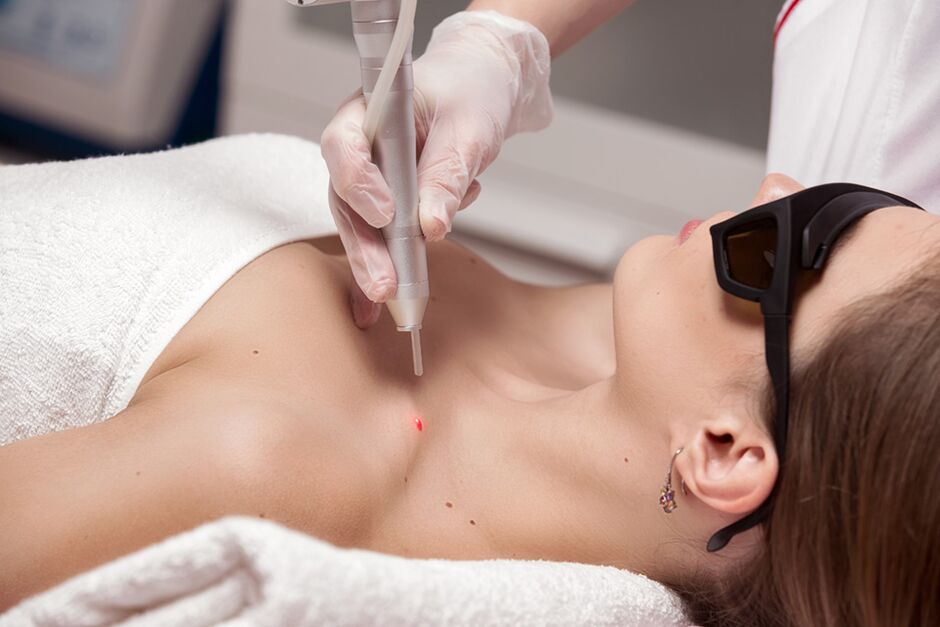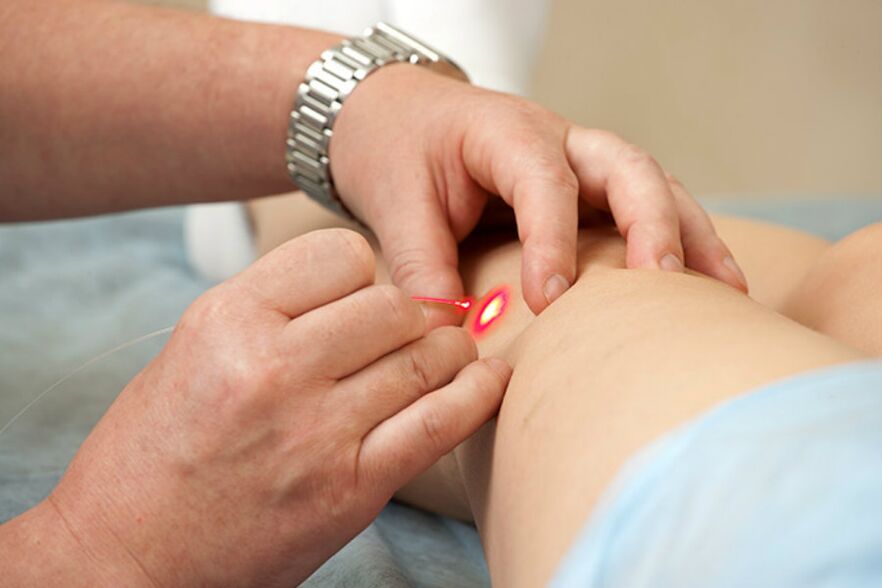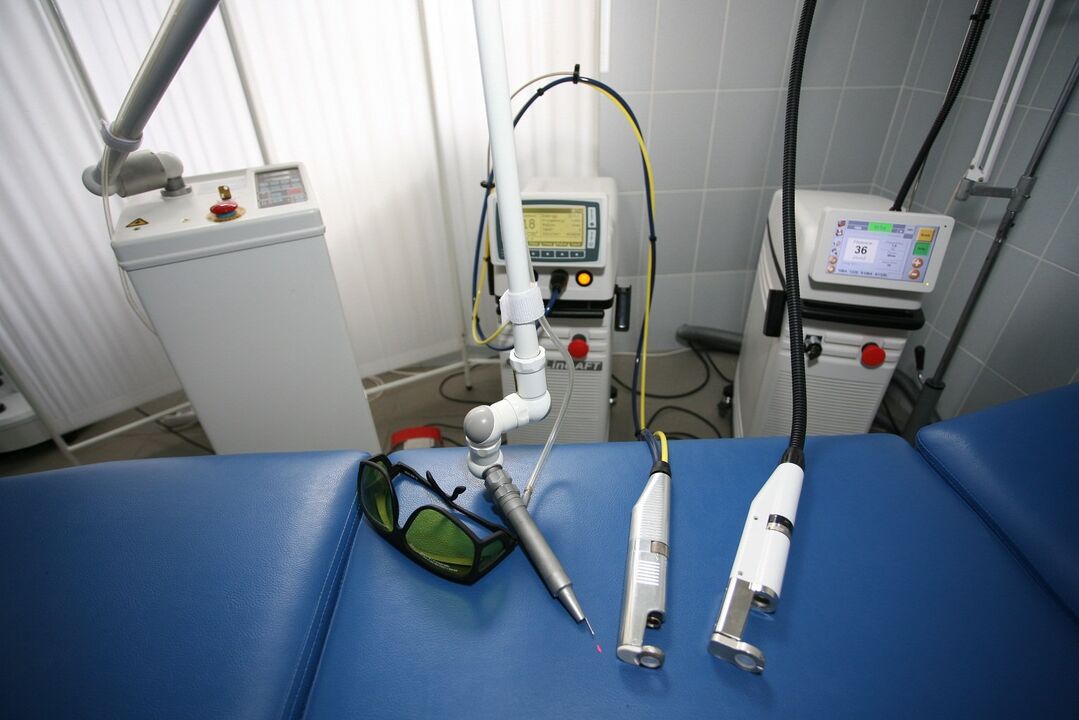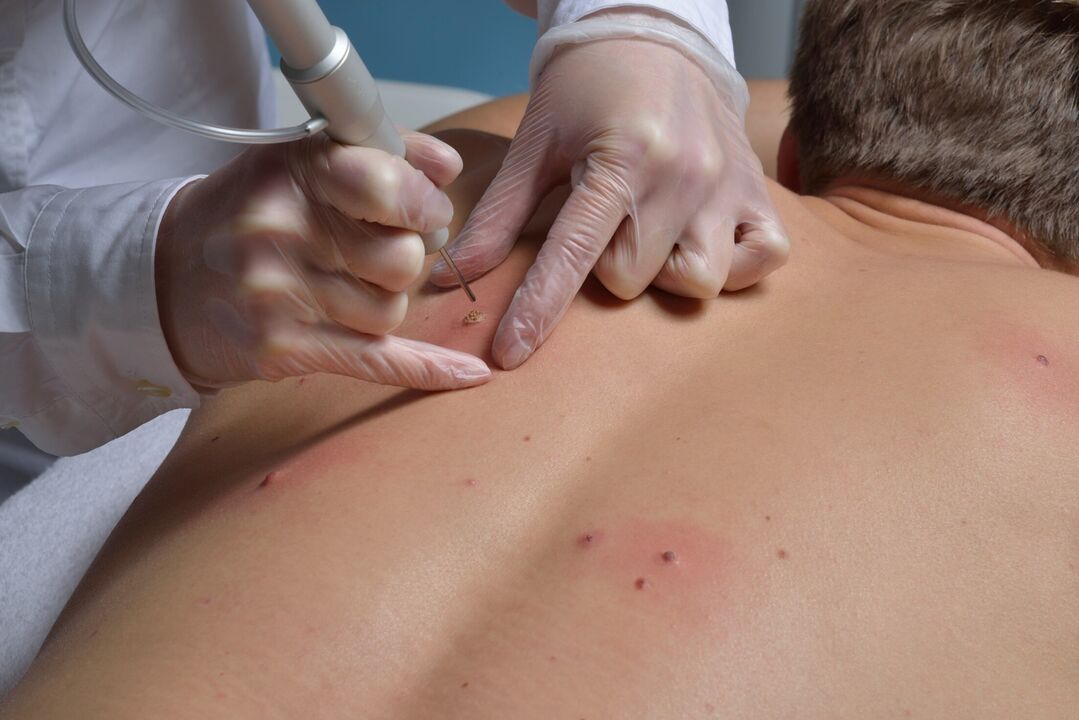Clinical manifestations of human papillomavirus infection are expressed by ugly wart formations in various parts of the body skin. Today, modern medicine and cosmetology offers many different methods for removing such growths. But the most effective way is laser wart removal, which is indicated for both adults and children.
As evidenced by numerous reviews, benign formations on the skin are burned by a laser painlessly and quickly. For the procedure, modern equipment is used, which allow you to accurately adjust the required depth of treatment of tissue damaged by a growth of warts. This eliminates the appearance of relapses and the formation of ugly sores.
The purpose of laser wart removal
In every part of the human body, different types of warts can be burned with laser beam. Such procedures are performed in specialized medical centers with the help of high-tech equipment by qualified specialists. This method is considered particularly effective when removing the following types of warts:

- flat;
- sputum;
- Common.
If there are no contraindications, then the removal of benign laser skin growths is almost always prescribed when the formations are located in a conspicuous place. This is due to the high aesthetics of the procedure. That is, after the operation, the healing is done quickly and leaves no marks.
Also, this method is indicated for those cases when it is necessary to remove a wart in a hard to reach place. This is directly related to the features of the device, which provides easy reconfiguration for any part of the body. With the help of a laser beam, the papilloma up to 5 mm is cauterized. To remove large warts, the use of electrocoagulation method is recommended.
Advice! In children, warts can be removed with laser only after reaching the age of five, and then only if such formations lead to discomfort. This is due to the fact that as the baby grows and the baby's body restructures, the growths may disappear on their own.
How is laser wart removal performed?
The procedure for laser wart removal does not cause any discomfort and is performed for no more than 5-7 minutes. The event consists of the following stages:

- Anesthesia. If the formation of warts has affected a large area of skin, then an anesthetic injection is done. But usually, the use of a special anesthetic oil or gel is sufficient to relieve pain.
- Removal. A laser beam is directed at the wart and the benign formation burns. It is absolutely not painful after anesthesia and the patient feels only a slight tingling sensation.
- Processing. A small wound is treated with an alcohol-free antiseptic, instead of which a potassium permanganate solution can be used. After that, an antiseptic regenerating bandage is applied.
Advice! You should know that if the accumulation has deep roots, then after a few months laser cauterization is done again. This avoids the occurrence of relapses.
Various surgical CO2 lasers are most commonly used to remove benign skin lesions. Conventionally, they can be compared to a contactless scalpel. All operations are performed painlessly and guarantee complete sterility due to the natural properties of the laser beam.

When exposed to a laser beam on a wart formation, coagulation of protein structures occurs and evaporation layer by layer of damaged tissue. This means that, after such treatment, all the cells affected by the virus die. The laser beam provides "welding" of blood vessels along the edges of the wound, which guarantees a bloodless operation and excludes infection.
Advice! You should know that for a few weeks before laser wart removal, it is not recommended to sunbathe or visit the solarium.
Contraindications to laser wart removal
Before laser wart removal, it is necessary to undergo an examination to confirm the good quality of the skin formation. Usually, it is enough for a specialist to examine the tissue under a microscope, but if in doubt, a biopsy may be prescribed.
Advice! It should be remembered that cauterization of malignant tumors with laser beam is strictly prohibited.
In addition, there are other contraindications, namely:
- Pregnancy and breastfeeding;
- Diabetes;
- Epilepsy and other diseases associated with convulsions;
- Lack of immunity;
- Skin hypersensitivity and intolerance to applied anesthesia.
- Allergy to ultraviolet.
Advice! During pregnancy, you can only remove warts with a laser if they cause discomfort. This may be related to plantar growths or formations located at friction sites. In this case, it is better to exclude the use of anesthesia, so as not to harm the unborn child.
Laser wart removal should be delayed if:
- Fever caused by a bacterial or viral infection;
- high blood pressure;
- Exacerbation of chronic diseases;
- Worsening of herpes.
Restrictions after wart removal
After laser wart removal, a small crust remains at the treatment site and there may be slight redness and slight swelling around the wound. Within a few days after the procedure, it is not recommended to take any action, namely:
- Forcefully remove the resulting crust after laser radiation;
- Apply any medical or cosmetic product to the healing surface;
- Wipe the wound after taking water procedures.

In addition, it is important after laser skin removal:
- Avoid prolonged exposure to sunlight until the wound is completely healed;
- Do not visit common places like baths, saunas or swimming pools.
- Avoid overheating or hypothermia of the treated skin areas.
Depending on the rules of rehabilitation, you can count on the fact that the resulting crust will fall off on its own, after about two weeks. After that, within a month, the skin will heal completely and there will be no trace.
The only drawback of laser wart removal is the rather high cost of the procedure. But at the same time, the price depends entirely on the size of the rise, the depth of penetration of its roots, as well as the location of the benign formation. In this regard, we can say with confidence that in most cases the removal of warts in the initial stage of their development is quite affordable at its cost.























